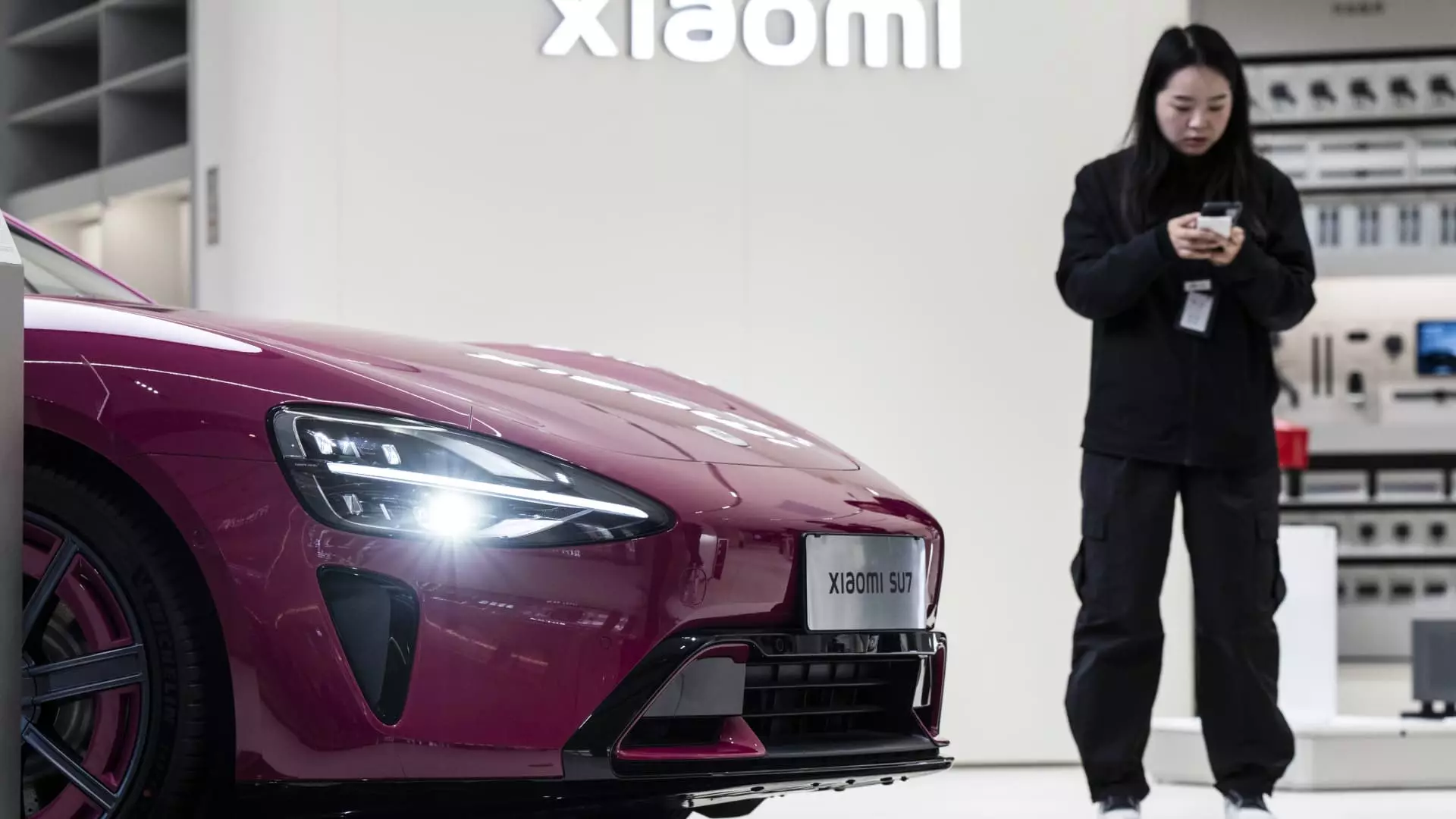In March 2023, the electric vehicle (EV) market in China underwent a transformative phase, characterized by exceptional performance from several key players. Xiaomi, Xpeng, and Leapmotor each reported deliveries hitting nearly 30,000 units, with Leapmotor leading the charge at 37,095. This figure paints a vivid picture of a market that is not just maturing but is splintering into factions. As these newcomers rise, it seems they are not only eager to establish their footing but also willing to extend their reach as they vie against industry stalwarts like BYD and Tesla. Such dynamics are a testament to fierce competition that motivates innovation and service enhancement across the board.
While this growth trajectory is commendable, one must wonder: at what cost does this rapid expansion come? In a rush to capture market share, the focus on quality and safety appears to be fluctuating. For instance, Xiaomi’s ambitious delivery targets — including a projected 350,000 vehicles in a year — coincide with a troubling accident involving their flagship SU7 model that resulted in fatalities. The company’s insistence that the car was in autopilot mode during the crash raises critical questions about the maturity of advanced driving technologies in an industry that seems more motivated by numbers than by the well-being of its consumers.
The Heavyweights: A Different Game
By contrast, the entrenched leader, BYD, continues to assert dominance in the market with 371,419 cars sold in March alone, representing a staggering 57.9% growth year-over-year. The company’s innovative “Super e-Platform” and the integration of DeepSeek AI into its advanced driver-assistance system underline its emphasis on costly development over sheer units produced. After all, delivering 400 kilometers with just five minutes of charging isn’t just a competitive edge; it’s a game-changer.
Yet even giants like BYD shouldn’t rest on their laurels. While numbers show impressive growth, they also indicate desultory results from other established competitors, such as Tesla. A reported 11.5% drop in year-over-year growth indicates that the American manufacturer is struggling to maintain its foothold amid growing local competitors who are aggressively targeting the segment that Tesla once dominated. This souring trend suggests an unsettling truth: even the most revered brands must constantly innovate or risk being overtaken in this fast-paced sector.
A Snapshot of Disruption: Startups vs. Established Brands
What’s particularly fascinating about this evolution is the stark divide between established giants and nascent companies. Xpeng has stepped up remarkably, with deliveries increasing by 331% year-over-year to 94,008 units in the first quarter. Such figures offer a glimmer of hope to startups, who until now have felt overshadowed by legacy brands. In addition, Leapmotor’s staggering quarterly growth has captured the attention of consumers and investors alike. Yet, with multiple startups claiming considerable market share, the issues of sustainability and long-term viability cannot be ignored.
However, as exciting as these delivery figures are, they mask significant concerns about supply chain stability, technological scalability, and consumer trust. Amidst rapid expansion, one can only question: How effectively are these companies handling production quality and customer service? Will they be able to sustain their momentum, or will they eventually succumb to the pressures of increased scrutiny and robust consumer expectations?
Quality vs. Quantity: The Balancing Act
Automakers face the constant challenge of balancing quality and quantity while striving to meet ambitious production goals. As delivery statistics soar, we need to be cautious about placing the cart before the horse. Electric vehicles should not merely become another data point in a quarterly report but should symbolize a commitment to enhanced driving experiences and consumer safety.
The fatalities resulting from the Xiaomi SU7 crash serve as a somber reminder of the need for rigorous safety protocols and quality control. As we examine these numbers, they should evoke both pride and responsibility in the automotive realm. Are these companies prepared to handle the increased risk that comes with speed? The accelerating EV landscape may be glittering with numbers, but at its core lies a demand for accountability and responsibility.
Ultimately, the fascinating development of the EV market in China is a mixed tapestry woven from threads of growth and intimidation. While some automakers proudly unveil exponential growth, the question remains: If we’re speeding toward the future, are we doing so with our eyes wide open? The race to lead the market should not drown out crucial ethical considerations, as consumer safety has to take a central position in a rapidly evolving automotive landscape.

